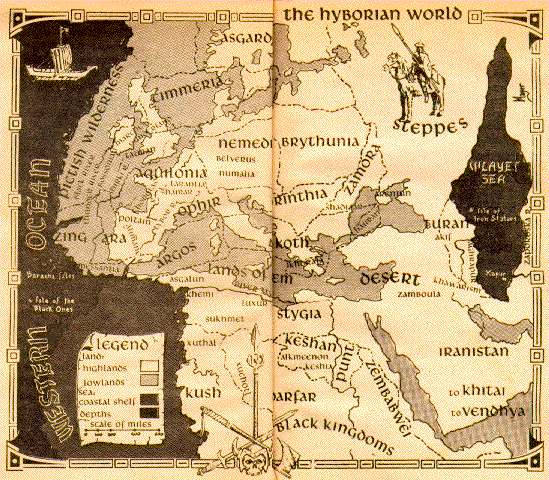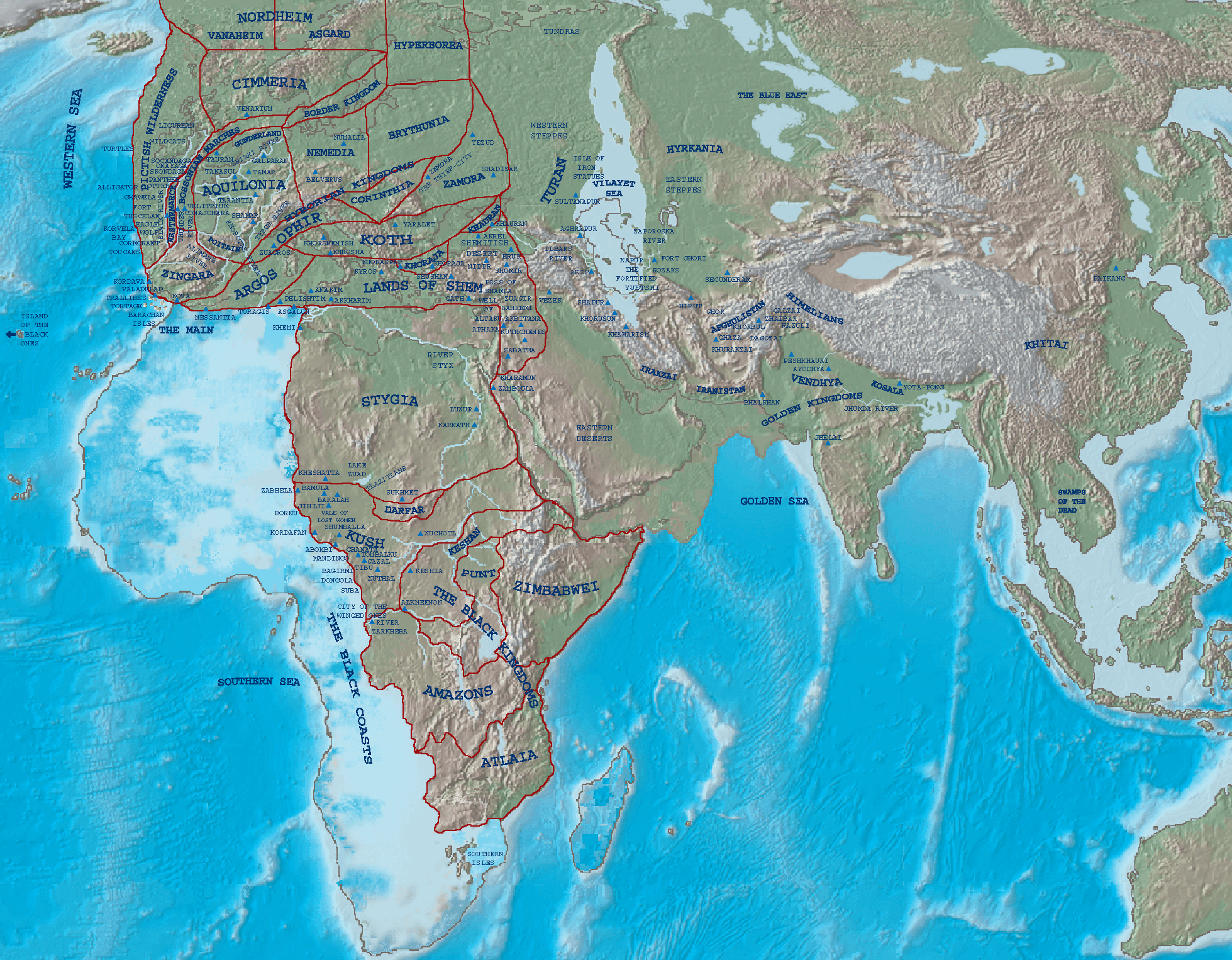I'd love to see someone try to parse together Howard's Hyborian Age with Tolkien's Middle-Earth. The "feel" of both is rather different and obviously there would have to be some fiddling, but considering that Tolkien said that the Third Age ended around 6,000 years ago we plop at least the 2nd and 3rd Age inbetween the end of the Hyborian Age and the beginning of recorded history. Then we can throw in the Mayan Calendar and we get the following:
Before 10,500 BC - Hyborian Age and/or 1st Age
10,500-7,100 BC - 2nd Age
7,100-4,000 BC - 3rd Age
4,000-1,000 BC? - 4th Age?
1,000 BC-2,012 AD - 5th Age?
2,012 AD+ - 6th Age?
The main problem is that Tolkien's 1st Age, "The Elder Days," is nothing like the Hyborian Age. I would suggest that one way around this paradox would be to transport the Hyborian Age to the lands east of Lonely Mountain so that the Hyborian Age is what was going on in the East and South when the First Age events as detailed in
The Silmarillion were taking place in the West.
I was on Santorini a couple of years ago, just before Greece started experiencing its financial woes, and I learned that Plato speculated that the myth of Atlantis started there, on that island, in the Aegean Sea. If you google "Santorini Atlantis", you'll find some info about it.
At somepoint, the story of Atlantis got transplanted to the Atlantic.
Actually, the story of Atlantis has a wide variety of sources, not only Greek. Check out
this page. For instance, the Aztecs spoke of the island of "Aztlan" and ancient Indians spoke of "Atala, the White Island."
There are a huge number of myths that talk about some kind of Flood and the sinking of some kind of island or continent and the end of a Golden Age. "Atlantis" is just the name that Plato used; what it was actually* called is secondary.
(*
If it existed, of course, although the weight of myth points to some kind of pre-Flood/Ice Age/Cataclysmic civilization or world, at least in some form or fashion; these myths have recently been supported by the work of Graham Hancock and many others. Hancock, in his book
Underworld, pointed out that the further back you go, the more you find land that has sunk into the ocean; given that people tend to live near the coasts, there is good reason to believe that there may not be just one "Atlantis" but many...that is, prior civilizations taken in by the ocean).


